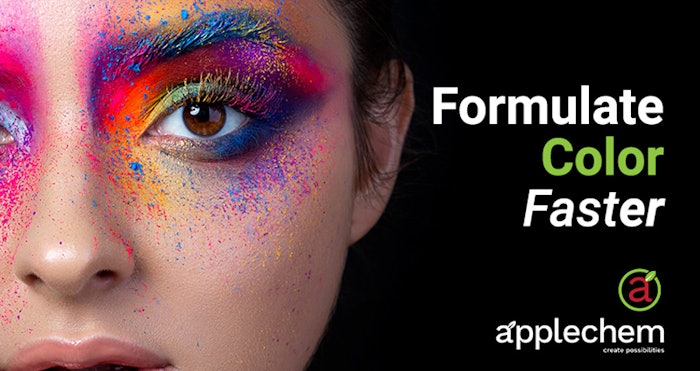
Color cosmetics in 2021 has rebounded in a big way, with the pandemic upending traditional consumer preferences and leaving both legacy and independent brands scrambling to adapt. Some of these microtrends include:
- Skin tone matching and cross-cultural collaboration
- Eye cosmetics like eyeshadow trending towards bold, highly pigmented coloring through the summer, individual expression, greater inclusivity
- Similar demand for facial complexion products – glowing, sheer, dewy, effortless beauty, metallic pigment highlights
- Lipstick demand spike – heavily pigmented for one-swipe coverage, long wear, high gloss, moisturization, with a need for texture innovations
Responding quickly to these consumer demand swings can be much more challenging for color formulating verses traditional skincare development. Color chemists know that building out a new color product line is more complicated than just switching shades, as the development of higher quality formulations can go off the rails fairly easily (see below). Legacy brands like L'Oréal or Estée Lauder have tried-and-true formulas with established manufacturing SOP’s, but new PD can be difficult and risky for independent brands with less development experience and smaller budgets.
As a result, there is a push now amongst both brands and contract manufacturers towards having stable, easily scalable stock formulations that can readily adapted to fit the latest trends without requiring a full product development cycle. But what are some of the challenges they usually face when trying to develop these types of formulations? Let's look at some of the typical issues:
- Creating bold colors - this usually requires high loads of color pigments, which lead to excessive amounts of diliuent taking up formulation space as well as pigment incompatibility issues with dispersant mixes.
- Similar problems crop up when trying to create more coverage or higher payoff. Moreover, inefficient wetting of pigments can create color shifting post-application as well as general difficulty in shade matching. This can all lead to issues with viscosity spiking too high, resulting in undesirably thick, cakey sensory.
- Fine-tuning the sensory becomes difficult as well, as the lack of formulation space from fixing stability issues make it harder it incorporate sensory enhancing ingredients.
In the end, you can't get a product out of the lab if it's not color stable and it almost always starts with the proper wetting of pigments and application of dispersant aids. This is why we developed Applemol PTIS Plus, a wetting + dispersant emollient combination that makes it easier than ever to push new color products to market at speed. With a single ingredient, you can eliminate many of the common formulation issues holding up your development schedule. If you have been experiencing any issues with viscosity fluctuations, bulky grind phases or poor pigment wetting, then Applemol™ PTIS Plus is a must try.
Disclaimer:
The above paid-for content was produced by and posted on behalf of the Sponsor. Content provided is generated solely by the Sponsor or its affiliates, and it is the Sponsor’s responsibility for the accuracy, completeness and validity of all information included. Global Cosmetic Industry takes steps to ensure that you will not confuse sponsored content with content produced by Global Cosmetic Industry and governed by its editorial policy.










